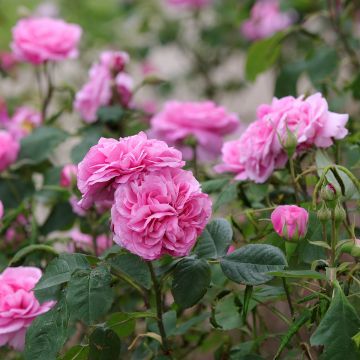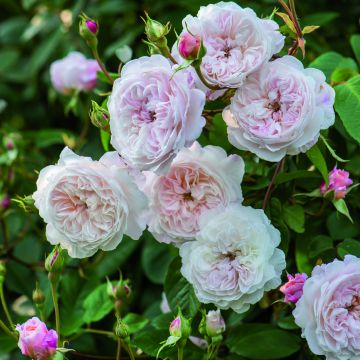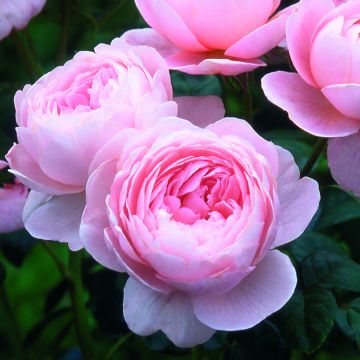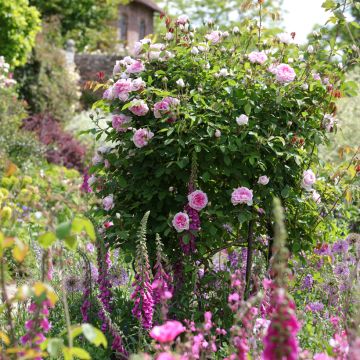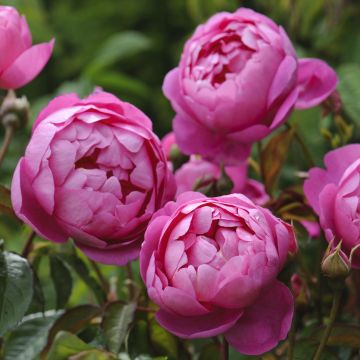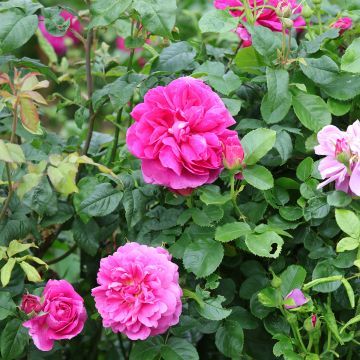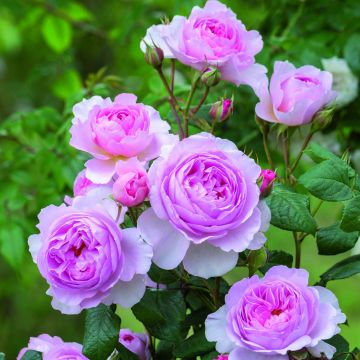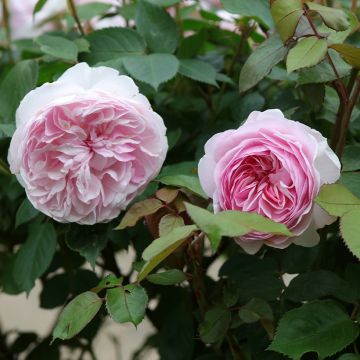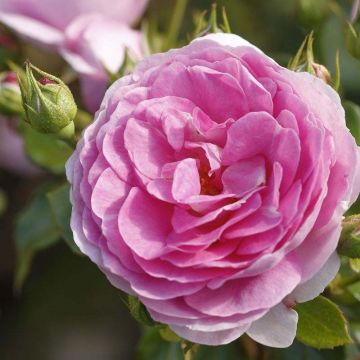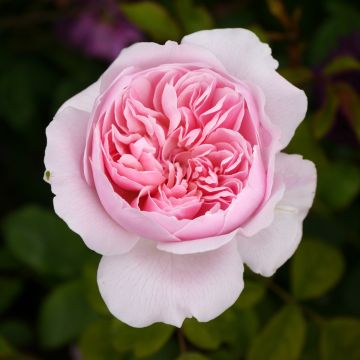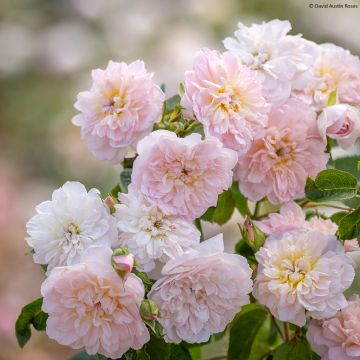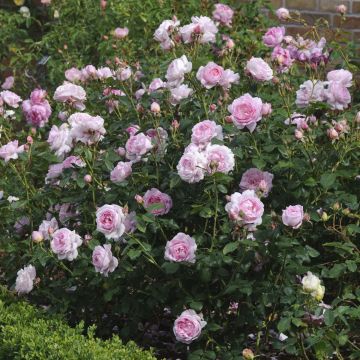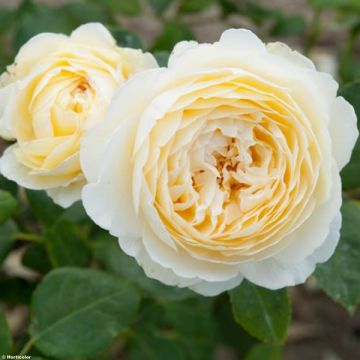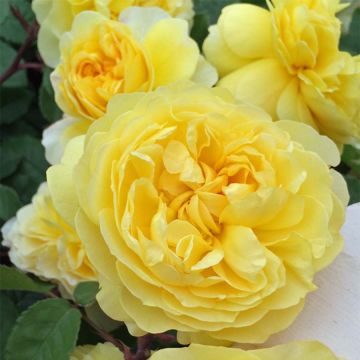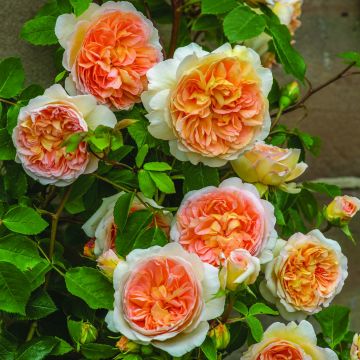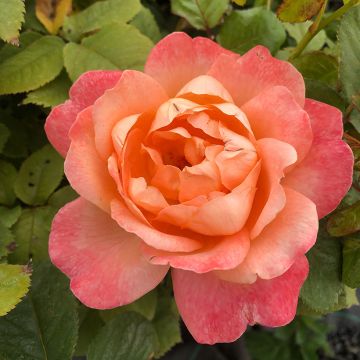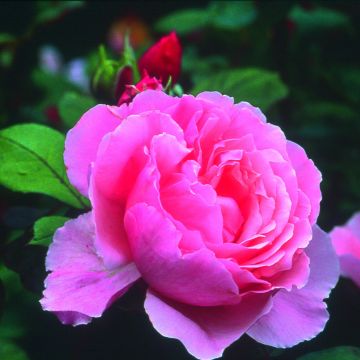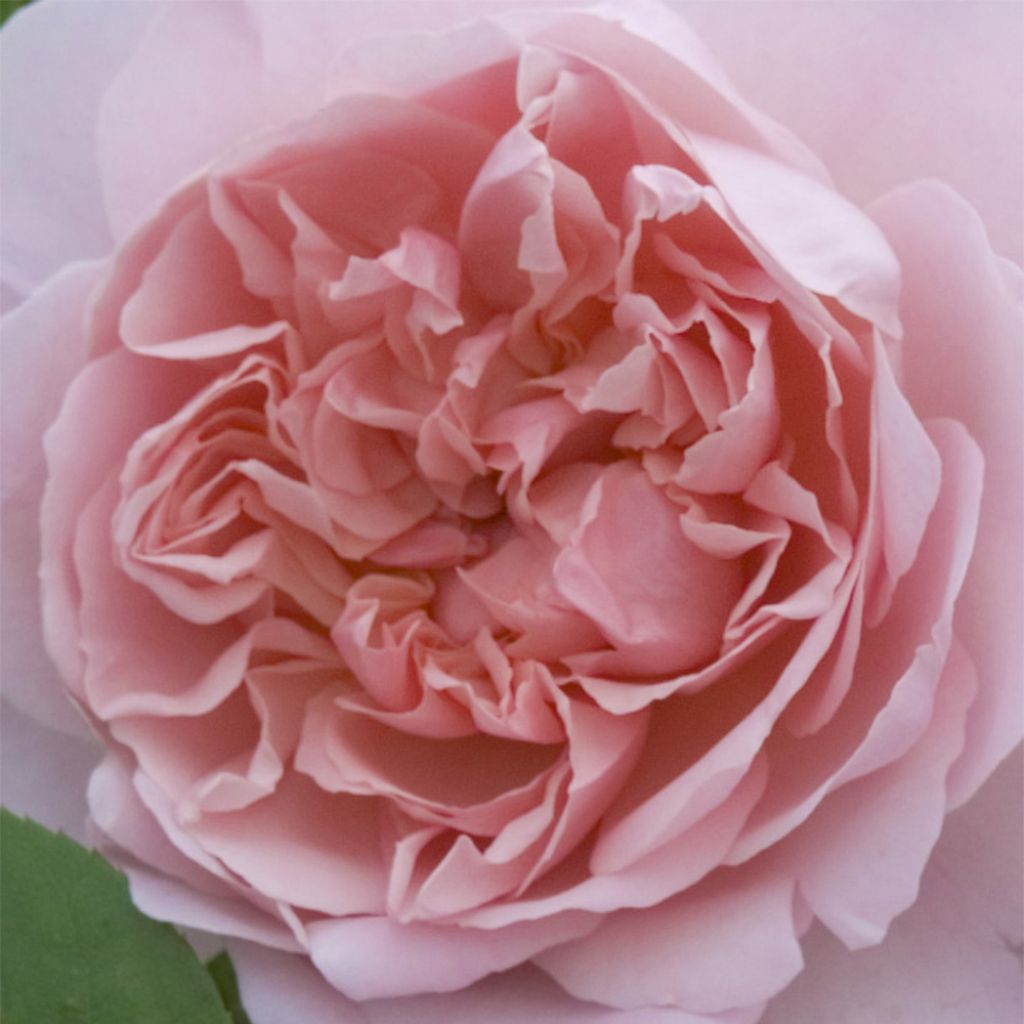

Rosa Wildeve - English Shrub Rose
Rosa Wildeve - English Shrub Rose
Rosa Wildeve® 'Ausbonny'
Why not try an alternative variety in stock?
View all →This plant carries a 24 months recovery warranty
More information
We guarantee the quality of our plants for a full growing cycle, and will replace at our expense any plant that fails to recover under normal climatic and planting conditions.
From €5.90 for pickup delivery and €6.90 for home delivery
Express home delivery from €8.90.
From €5.90 for pickup delivery and €6.90 for home delivery
Express home delivery from €8.90.
Delivery to Corse prohibited: UE law prohibits the import of this plant from mainland France to Corse as part of the fight against Xylella fastidiosa. Please accept our sincere apologies.
More information

Does this plant fit my garden?
Set up your Plantfit profile →
Description
The English rose Wildeve is almost perfect: slender, repeat flowering, disease resistant, with a deliciously fresh fragrance. The flower buds are scarlet pink; and then become tinted with pale pink, nuanced with apricot, as they open. This variety with a spreading habit can be used as a shrub in the foreground or as a groundcover rose.
This particularly robust and healthy shrub produces long arched branches, which are very floriferous. This proves to be an advantage when integrating it into natural-inspired flowerbeds, as it gives it a lot of flexibility and versatility. Vigorous and fast-growing, it can cover an area of 1 to 2 m² in just a few seasons. 'Wildeve' shows very good resistance to diseases, reblooms regularly from summer to frost, even if its flowers are quite short-lived, and offers a pleasant, very fresh fragrance.
Rose Wildeve is a useful variety for somewhat messy areas of the garden, or in slightly poor soil, to create a backdrop for clumps of irises, for example. It will also bring a floral touch to sunny rockeries, but will also thrive in a large pot where its spreading silhouette gracefully cascades. It will also grow well on a slope or bank which is not too dry, in the company of catmints, a true groundcover rose like the salmon orange rose R. decorosier 'Calizia' , or the magenta pink rose 'Magic Meillandécor'. The branches will quickly spread along the slope and eventually cover it with flowers. You can also plant it on the edge of a pond or water feature, use it to fill the base of a tree, or let it cascade from a wall, naturally and elegantly.
Bred by David Austin in 2003.
Report an error about the product description
Rosa Wildeve - English Shrub Rose in pictures
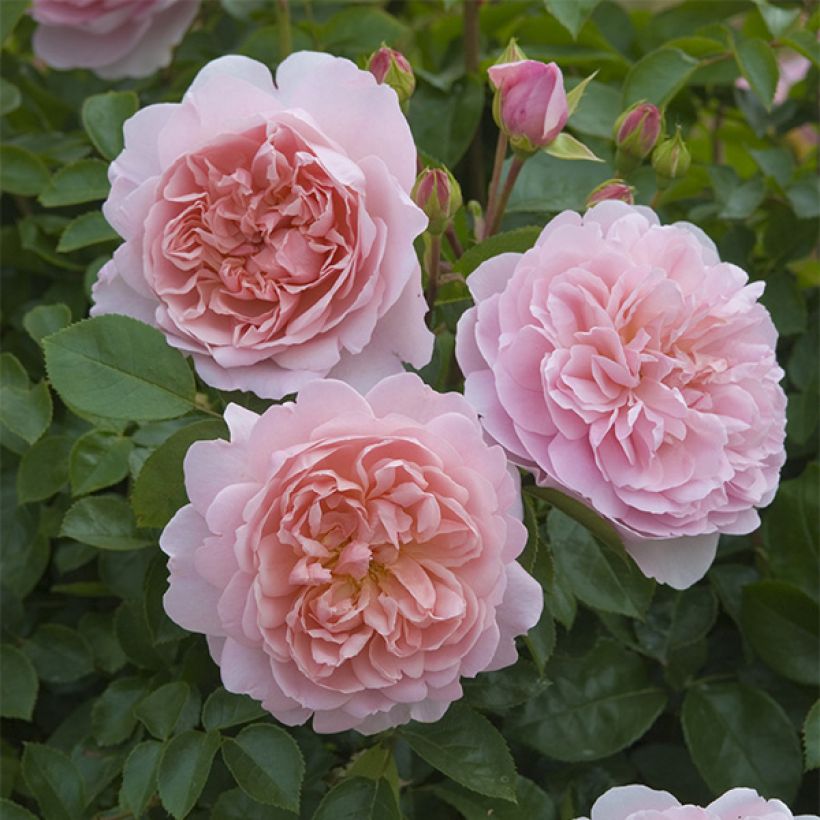

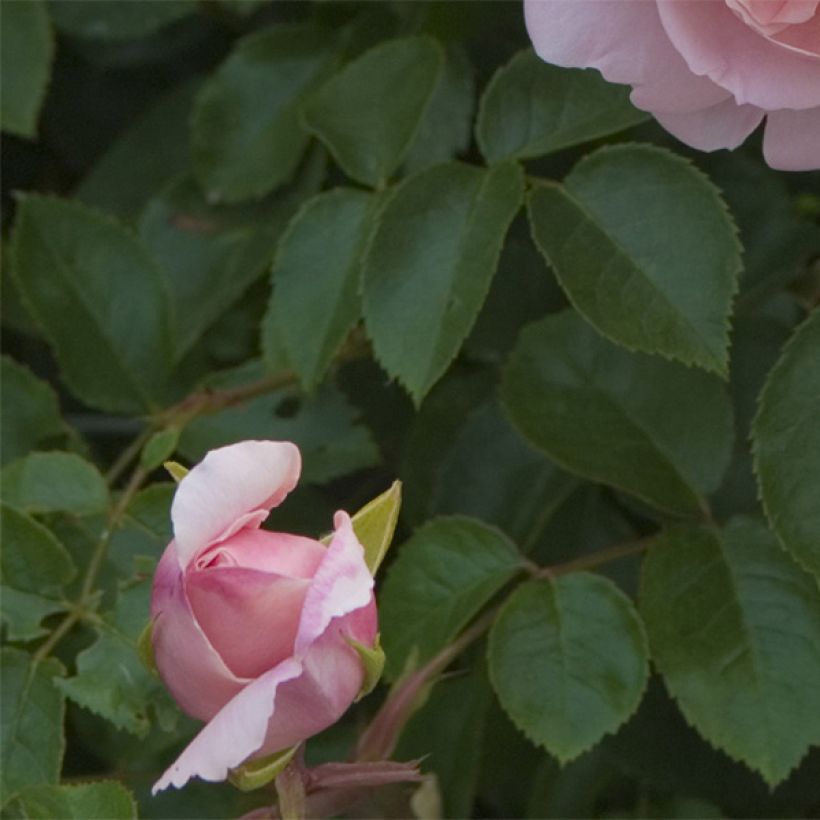

Plant habit
Flowering
Foliage
Botanical data
Rosa
Wildeve® 'Ausbonny'
Rosaceae
Cultivar or hybrid
Rosa canina Laxa (Wrapped bare root, 4L/5L pot)
Other David Austin Roses
Planting and care
Plant the English Rose Wildeve in a sunny or lightly shaded location. English roses are tolerant but won't tolerate excessive limestone. They will adapt to any garden as long as the soil is well cultivated and rich enough. To plant your rose, prepare the soil well, crumble it and put an amendment at the bottom of the planting hole, such as bonemeal. Water thoroughly after planting to remove any air pockets. Water regularly for a few weeks to encourage rooting.
Pruning English roses is essential for flowering. At the end of winter, shorten the branches to 3-5 buds above the ground (at the lowest), choose an outward-facing bud for a more elegant habit. Take advantage of this pruning to remove dead wood and unsightly branches. Prune at an angle above a bud. As the flowers bloom, remove faded flowers, as this stimulates the development of other buds.
Pruning for groundcover roses:
Groundcover roses should not be pruned too severely. In the first few years, only remove upright branches that imbalance its silhouette to maintain a compact habit and remove dead wood. When the bush is 4 to 5 years old, perform a rejuvenation pruning. Shorten one out of three branches to 30 cm (12in) from the graft point. This encourages the development of vigorous and floriferous young branches while gradually renewing the rose's framework without compromising its flowering.
Roses are often spotted or unsightly at the end of summer, but it is not a problem for their development. These spots are not harmful to the rose; it is a natural phenomenon.
Planting period
Intended location
Care
-
, onOrder confirmed
Reply from on Promesse de fleurs
Haven't found what you were looking for?
Hardiness is the lowest winter temperature a plant can endure without suffering serious damage or even dying. However, hardiness is affected by location (a sheltered area, such as a patio), protection (winter cover) and soil type (hardiness is improved by well-drained soil).

Photo Sharing Terms & Conditions
In order to encourage gardeners to interact and share their experiences, Promesse de fleurs offers various media enabling content to be uploaded onto its Site - in particular via the ‘Photo sharing’ module.
The User agrees to refrain from:
- Posting any content that is illegal, prejudicial, insulting, racist, inciteful to hatred, revisionist, contrary to public decency, that infringes on privacy or on the privacy rights of third parties, in particular the publicity rights of persons and goods, intellectual property rights, or the right to privacy.
- Submitting content on behalf of a third party;
- Impersonate the identity of a third party and/or publish any personal information about a third party;
In general, the User undertakes to refrain from any unethical behaviour.
All Content (in particular text, comments, files, images, photos, videos, creative works, etc.), which may be subject to property or intellectual property rights, image or other private rights, shall remain the property of the User, subject to the limited rights granted by the terms of the licence granted by Promesse de fleurs as stated below. Users are at liberty to publish or not to publish such Content on the Site, notably via the ‘Photo Sharing’ facility, and accept that this Content shall be made public and freely accessible, notably on the Internet.
Users further acknowledge, undertake to have ,and guarantee that they hold all necessary rights and permissions to publish such material on the Site, in particular with regard to the legislation in force pertaining to any privacy, property, intellectual property, image, or contractual rights, or rights of any other nature. By publishing such Content on the Site, Users acknowledge accepting full liability as publishers of the Content within the meaning of the law, and grant Promesse de fleurs, free of charge, an inclusive, worldwide licence for the said Content for the entire duration of its publication, including all reproduction, representation, up/downloading, displaying, performing, transmission, and storage rights.
Users also grant permission for their name to be linked to the Content and accept that this link may not always be made available.
By engaging in posting material, Users consent to their Content becoming automatically accessible on the Internet, in particular on other sites and/or blogs and/or web pages of the Promesse de fleurs site, including in particular social pages and the Promesse de fleurs catalogue.
Users may secure the removal of entrusted content free of charge by issuing a simple request via our contact form.
The flowering period indicated on our website applies to countries and regions located in USDA zone 8 (France, the United Kingdom, Ireland, the Netherlands, etc.)
It will vary according to where you live:
- In zones 9 to 10 (Italy, Spain, Greece, etc.), flowering will occur about 2 to 4 weeks earlier.
- In zones 6 to 7 (Germany, Poland, Slovenia, and lower mountainous regions), flowering will be delayed by 2 to 3 weeks.
- In zone 5 (Central Europe, Scandinavia), blooming will be delayed by 3 to 5 weeks.
In temperate climates, pruning of spring-flowering shrubs (forsythia, spireas, etc.) should be done just after flowering.
Pruning of summer-flowering shrubs (Indian Lilac, Perovskia, etc.) can be done in winter or spring.
In cold regions as well as with frost-sensitive plants, avoid pruning too early when severe frosts may still occur.
The planting period indicated on our website applies to countries and regions located in USDA zone 8 (France, United Kingdom, Ireland, Netherlands).
It will vary according to where you live:
- In Mediterranean zones (Marseille, Madrid, Milan, etc.), autumn and winter are the best planting periods.
- In continental zones (Strasbourg, Munich, Vienna, etc.), delay planting by 2 to 3 weeks in spring and bring it forward by 2 to 4 weeks in autumn.
- In mountainous regions (the Alps, Pyrenees, Carpathians, etc.), it is best to plant in late spring (May-June) or late summer (August-September).
The harvesting period indicated on our website applies to countries and regions in USDA zone 8 (France, England, Ireland, the Netherlands).
In colder areas (Scandinavia, Poland, Austria...) fruit and vegetable harvests are likely to be delayed by 3-4 weeks.
In warmer areas (Italy, Spain, Greece, etc.), harvesting will probably take place earlier, depending on weather conditions.
The sowing periods indicated on our website apply to countries and regions within USDA Zone 8 (France, UK, Ireland, Netherlands).
In colder areas (Scandinavia, Poland, Austria...), delay any outdoor sowing by 3-4 weeks, or sow under glass.
In warmer climes (Italy, Spain, Greece, etc.), bring outdoor sowing forward by a few weeks.


































